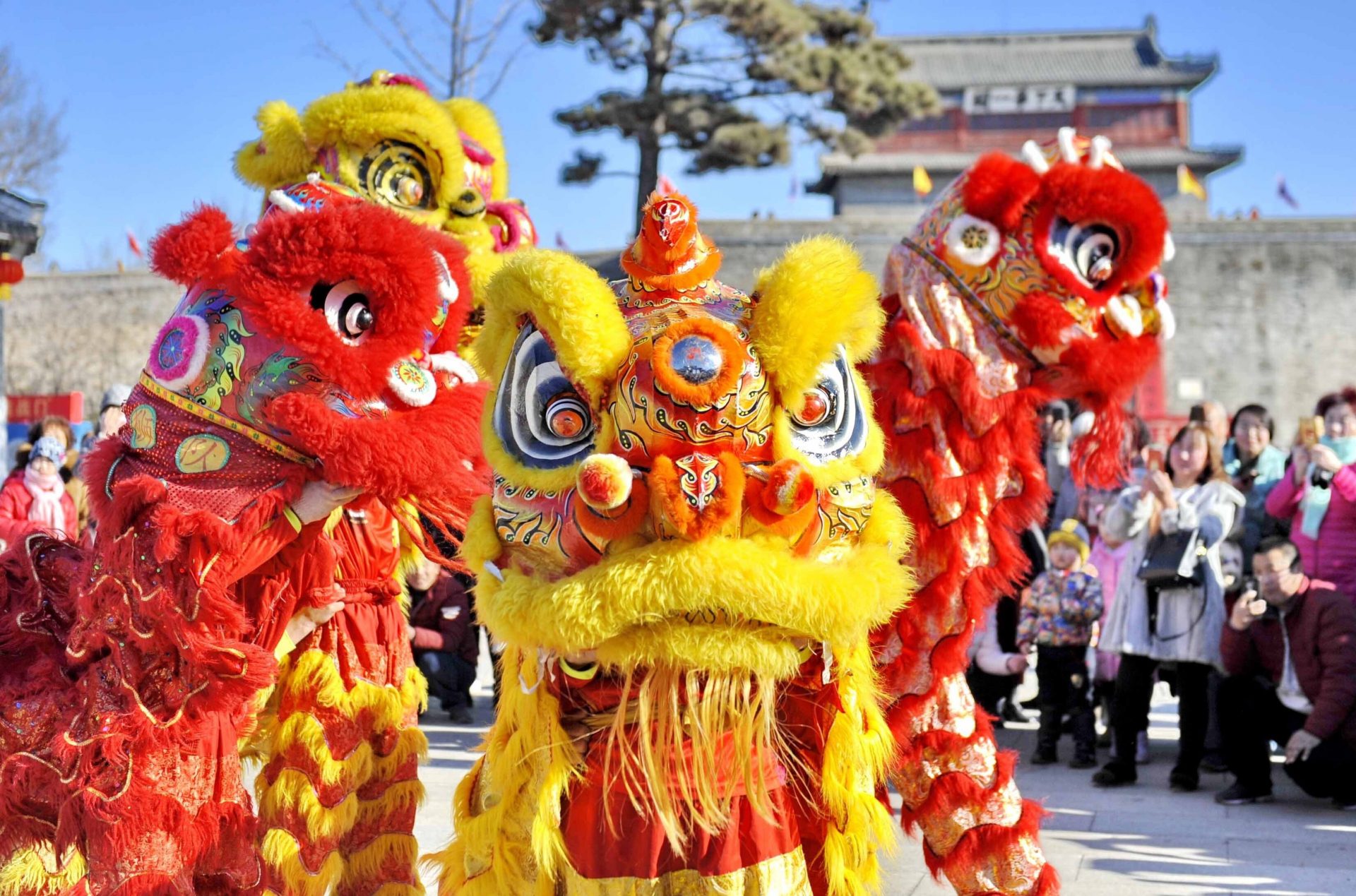How did the lion become the prime animal in an energetic and acrobatic performance ushering in the Lunar New Year with pomp and gusto? Read on to find out!
If you can only describe Chinese New Year with one performance, it’s likely the lion dance. The rhythmic thumping of drums and clashing of cymbals elevating the festive mood as the lions perform gravity-defying acrobatics are an integral part of CNY every year.
But this spectacle is more than a visual treat. Deeply rooted in Chinese culture, this dance oozes history, mystical beliefs, and a lot of discipline.
BETWEEN A SYMBOL OF GOOD LUCK AND A SOCIAL GESTURE
It may come as a surprise that the tawny-coloured animal historically never inhabited China. So how did it become an essential part of a traditional dance? To answer your curiosity are a few timeworn tales, which vary in perspectives yet signify what the dance is today.
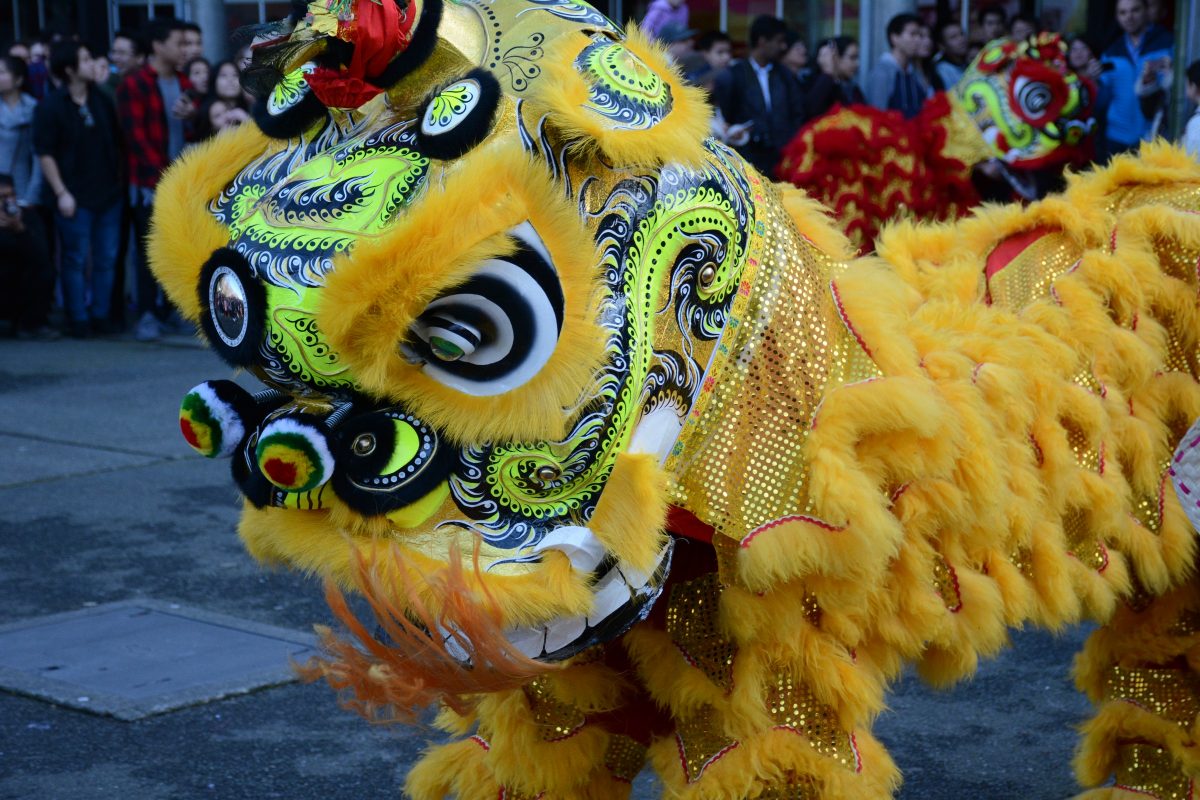
Dating back to the Han Dynasty (202 BC – 220 AD), emissaries from Central Asia and Persia would gift these felines to the Chinese emperors during the Silk Road Trade. People were fascinated! Words turned into wonders about these majestic beasts. They mimicked the appearances and acts of the lions and soon resulted in a lion dance during the Three Kingdoms Period (220 to 280 AD). The fame of lions was on par with the rise of Buddhism in the Northern and Southern Dynasties, so much so that people started putting on lion costumes.
Legend also has it that an emperor once had a dream in which a mighty animal saved his life. Upon describing the dream to his ministers, one of them told him that is it a creature from the West, a lion. The animal soon became a beacon of good luck and was believed to repel evil spirits.
Another tale recounts that a lion defeated and chased away a monster called Nian – who vowed to return. The following year, the villagers did not have a lion, therefore they put on lion costumes to get the job done. The ferocious beast was also afraid of red, which made it the theme colour of Chinese New Year.
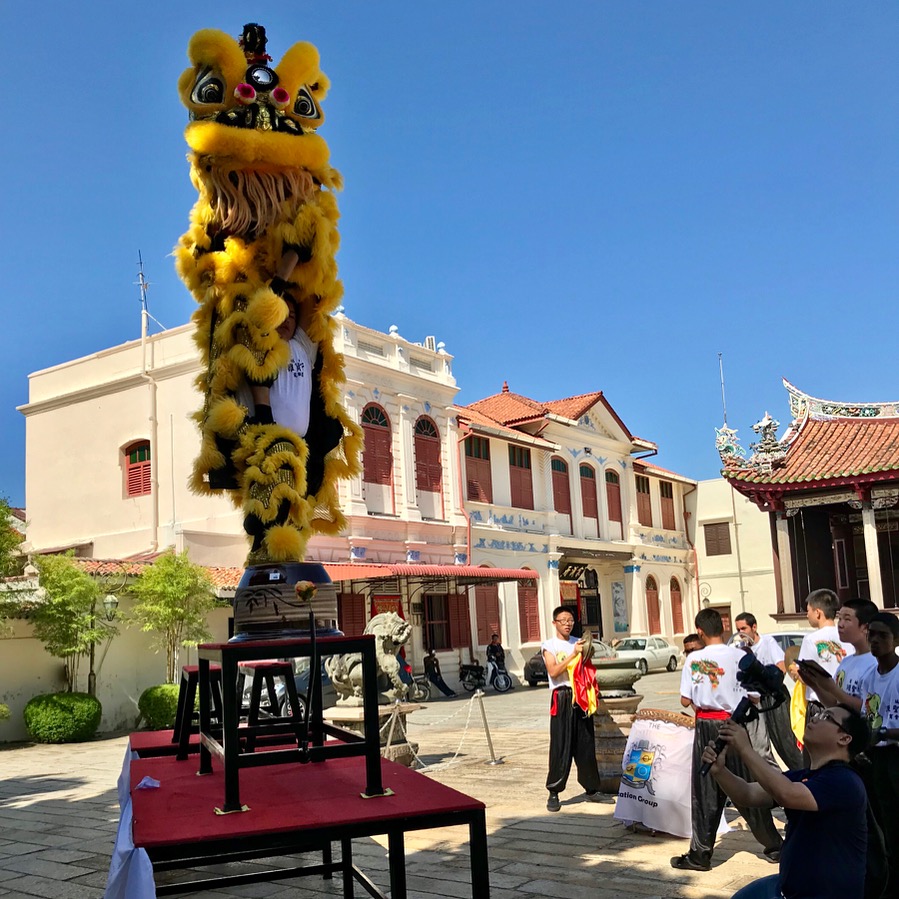
Moving forward to the Tang Dynasty (618 – 907), the lion dance was an integral part of cultural entertainment and was performed at the imperial court. Historical records have also documented the traditional performance under the names of Great Peace Music and Lion Dance of the Five Directions. The latter features a quintet of lions in different colours, expressing different moods, under control by ropes.
METICULOUS DETAILS PORTRAY A BIGGER PICTURE
The lion dance brings the pages of fables to life with the finest of details. The most impressive component of the lion is its head. It is laboriously handmade into a frame with either rattan or bamboo. Paper painted with intricate designs encircle the structure, and together with thick fur and ornaments provides a mystique appeal.
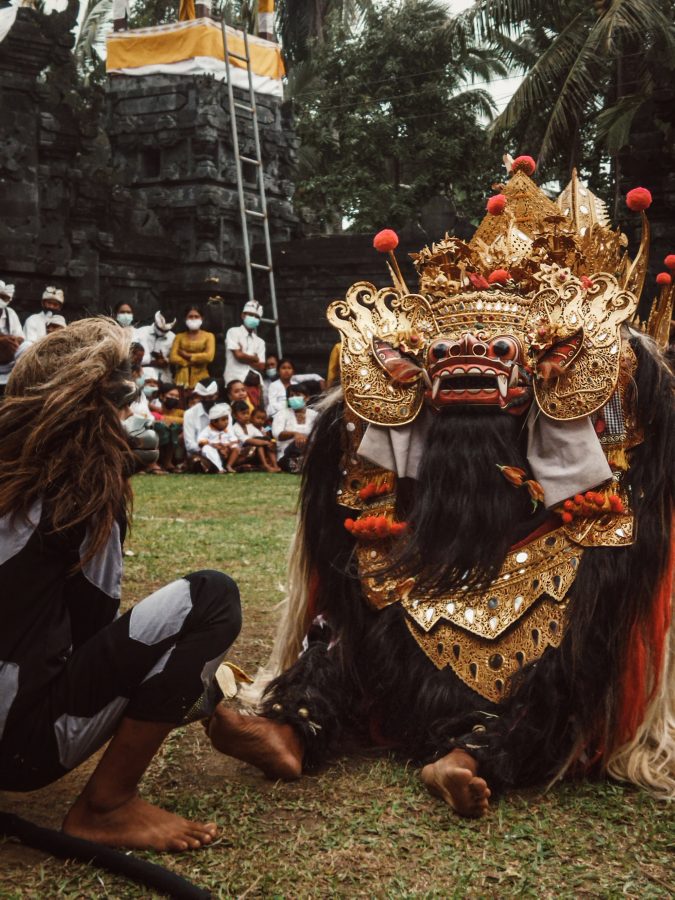
Since lions are not native to China, the characteristics of a Chinese dragon is largely visible on the head. You will also witness the lion bowing three times when the dance begins and concludes. Each one stands for heaven, earth, and man. If a renowned individual is present, the lion will do similar bows to the person.
These lions are often given a task to nab and eat lettuce or oranges. The next act sees the animal eating it and spitting the vegetable back to the audience. Not that the lion isn’t interested in a green diet, yet the Chinese word for “lettuce” sounds similar to “wealth”. This action is believed to offer prosperity back to people.
NORTH VS SOUTH
As the traditional dance blossomed across East Asia, so did the variety. In general, the traditional dance can be divided into Northern and Southern styles. The Northern China version is semi-realistic and knit-knotted to kung fu – Chinese martial arts. The lions, usually a male and female and sometimes cubs, are red and yellow with a shaggy fringe. What this version lacks in decorative outfits, it more than makes up with hefty movements, including climbing and wrestling.
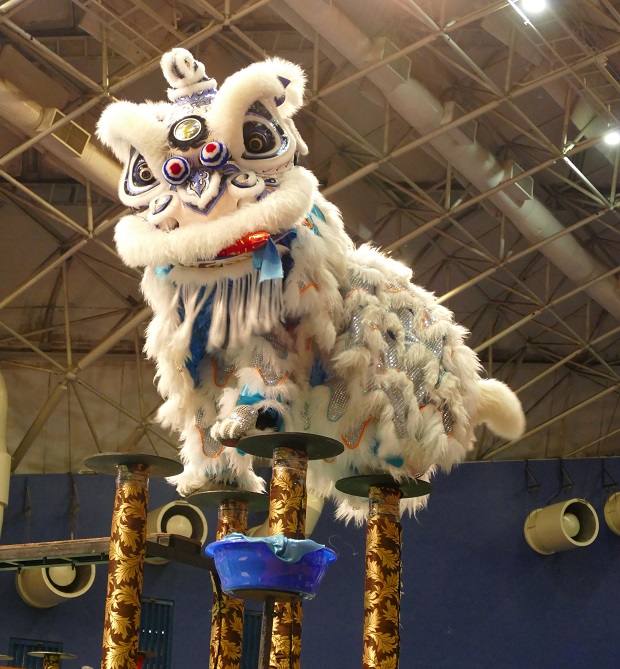
The more popular Southern-style appears less aggressive and more entertaining. Originating from the Guangdong province, this lion dance brims with bright and bold colours. The lions spot a fur trim and can be subdivided into The Futsan Lion and The Hoksan Lion. The former is the first lion created in China, sporting a high forehead, curved lips and a sharp horn. The latter was constructed much later and highlights the behaviour of a cat. Aptly nicknamed “The Duck Beak Lion”, it has a shorter forehead, flat lips and a rounded horn.
Southern lions have a mirror between the lion’s eyes that is meant to scare away evil spirits and a horn on the forehead to fight evil. The red ribbons indicate that the creature has been blessed and roused to pay respect to the gods.
DISTINCTIVE VARIATIONS ACROSS REGIONS
From country to country, cultural interchanges influence the performances. Korean lions feature woolly costumes and are historically used for exorcism rituals while in Indonesia, the performance is known as Barong Dance where the lions retain comic heads and elaborate fur coats. Tibet’s Snow Lion, or locally known as Singi Chham, owns the most unique outlook sporting a white body and a green mane, and sometimes a dancer in a black yak costume joins the celebration.
DANCERS ARE THE HEART AND SOUL OF THE PERFORMANCES
Dancers are the backbone of the lion dance. There are two dancers: one carries the head and front limbs while the other controls the lion’s tail and hind legs. The front individual leads the lion, sets the pace and controls the mouth, ear and eye gestures.
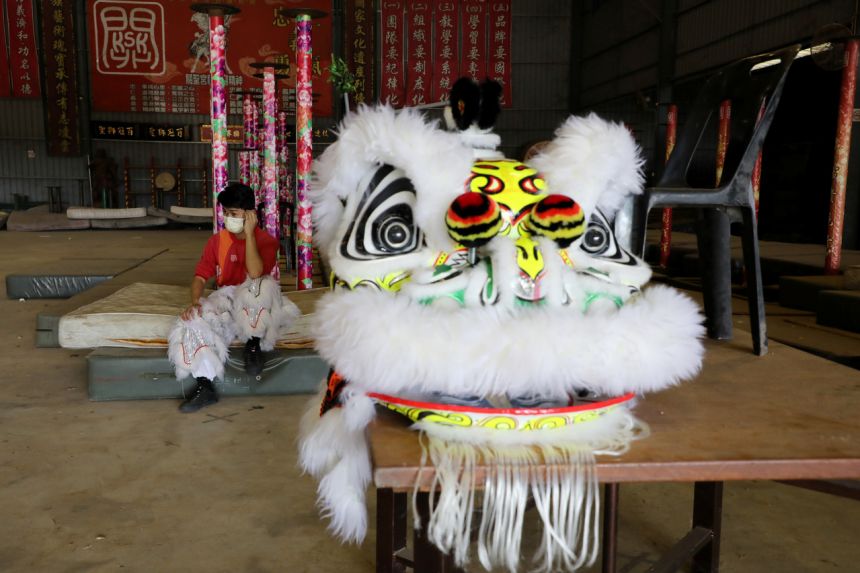
Different occasions observe different stories, which attest to the dancers’ memory, not forgetting the coordination and stunts that demand utmost physical resilience. The tradition only allows two men or two women in the lion with no mixing.
MALAYSIAN TROUPES SET THE BENCHMARK HIGHER
Malaysians are good at putting their creative spin onto anything, and this traditional dance is no exception. Ever watched lion dancers jumping from one vertical pole to another? It is our Chinese Malaysians’ wheelhouse. This acrobatic form of lion dance was pioneered by Master Siow Ho Phiew and passed down to other Malaysian lion dance associations.
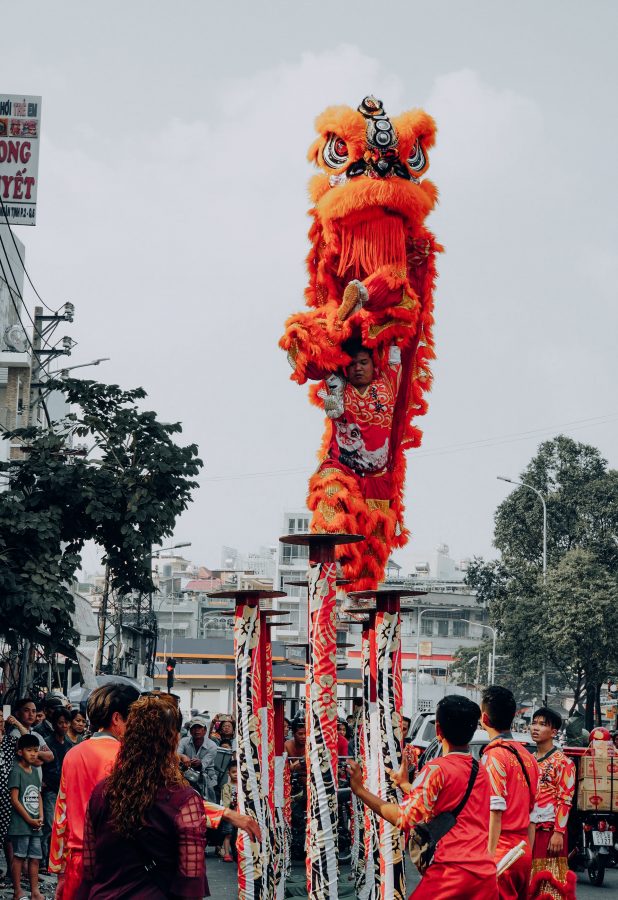
It is an inspiration from a kung fu style known as Mei Hua Quan. The practice began with upturned flowerpots and wooden poles. Putting muscle memory and balance in work, the pair leaps between poles while working on stunts.
Our troupes did not stop there. They went on to increase the height of the poles in the championships. What was first introduced at 3-metres tall, later progressed to 6-metres. The first Genting World Lion Dance Championship was held in Malaysia in 1994. Since then, Malaysian teams have topped the score charts. With much expertise, some lion dancers even coach other international teams.
GAMBOL TO THE LION’S HEARTBEAT
The metrical rhythms of beating drums, clanging cymbals, and resounding gongs set the pace for the lion dance. The drum is said to represent the heartbeat of the lion and it imbues a positive aura. From the moment the trio of instruments gets played, you’ll see attendees struggling to steady their head movements, relatively waking up the lion within them.
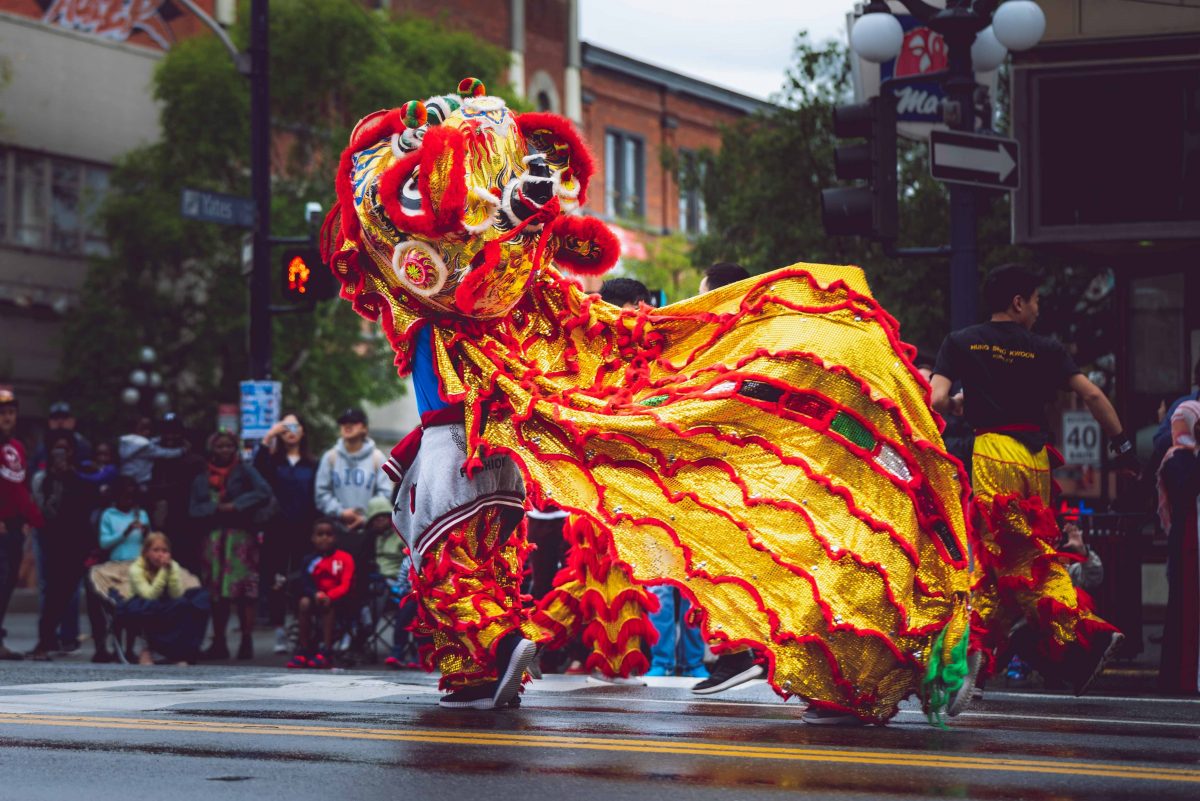
The lion dance is all-consuming. Its origins may remain hazy, yet it veers into traditions that represent a community and amazes the people. Quite often we hear that younger generations are overlooking handed-down customs. But that’s not the case with the lion dance. Guarded with zeal and pride, the future of this tradition is as strong as a lion.
"ExpatGo welcomes and encourages comments, input, and divergent opinions. However, we kindly request that you use suitable language in your comments, and refrain from any sort of personal attack, hate speech, or disparaging rhetoric. Comments not in line with this are subject to removal from the site. "


